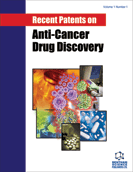Abstract
Antibody-delivered drugs and toxins are poised to become important classes of cancer therapeutics. These biopharmaceuticals have potential in this field, as they can selectively direct highly potent cytotoxic agents to cancer cells that present tumor-associated surface markers, thereby minimizing systemic toxicity. The activity of some conjugates is of particular interest receiving increasing attention, thanks to very promising clinical trial results in hematologic cancers. Over twenty antibody-drug conjugates and eight immunotoxins in clinical trials as well as some recently approved drugs, support the maturity of this approach. This review focuses on recent advances in the development of these two classes of biopharmaceuticals: conventional toxins and anticancer drugs, together with their mechanisms of action. The processes of conjugation and purification, as reported in the literature and in several patents, are discussed and the most relevant results in clinical trials are listed. Innovative technologies and preliminary results on novel drugs and toxins, as reported in the literature and in recently-published patents (up to February 2013) are lastly examined.
Keywords: Antibody drug conjugate, anticancer agents, auristatins immunotoxin, calicheamicins, cross-linkers, duocarmycins, maytansinoids.
Recent Patents on Anti-Cancer Drug Discovery
Title:Advances in Anticancer Antibody-Drug Conjugates and Immunotoxins
Volume: 9 Issue: 1
Author(s): Franco Dosio, Barbara Stella, Sofia Cerioni, Daniela Gastaldi and Silvia Arpicco
Affiliation:
Keywords: Antibody drug conjugate, anticancer agents, auristatins immunotoxin, calicheamicins, cross-linkers, duocarmycins, maytansinoids.
Abstract: Antibody-delivered drugs and toxins are poised to become important classes of cancer therapeutics. These biopharmaceuticals have potential in this field, as they can selectively direct highly potent cytotoxic agents to cancer cells that present tumor-associated surface markers, thereby minimizing systemic toxicity. The activity of some conjugates is of particular interest receiving increasing attention, thanks to very promising clinical trial results in hematologic cancers. Over twenty antibody-drug conjugates and eight immunotoxins in clinical trials as well as some recently approved drugs, support the maturity of this approach. This review focuses on recent advances in the development of these two classes of biopharmaceuticals: conventional toxins and anticancer drugs, together with their mechanisms of action. The processes of conjugation and purification, as reported in the literature and in several patents, are discussed and the most relevant results in clinical trials are listed. Innovative technologies and preliminary results on novel drugs and toxins, as reported in the literature and in recently-published patents (up to February 2013) are lastly examined.
Export Options
About this article
Cite this article as:
Dosio Franco, Stella Barbara, Cerioni Sofia, Gastaldi Daniela and Arpicco Silvia, Advances in Anticancer Antibody-Drug Conjugates and Immunotoxins, Recent Patents on Anti-Cancer Drug Discovery 2014; 9 (1) . https://dx.doi.org/10.2174/15748928113089990045
| DOI https://dx.doi.org/10.2174/15748928113089990045 |
Print ISSN 1574-8928 |
| Publisher Name Bentham Science Publisher |
Online ISSN 2212-3970 |
 132
132
- Author Guidelines
- Bentham Author Support Services (BASS)
- Graphical Abstracts
- Fabricating and Stating False Information
- Research Misconduct
- Post Publication Discussions and Corrections
- Publishing Ethics and Rectitude
- Increase Visibility of Your Article
- Archiving Policies
- Peer Review Workflow
- Order Your Article Before Print
- Promote Your Article
- Manuscript Transfer Facility
- Editorial Policies
- Allegations from Whistleblowers
Related Articles
-
Phosphodiesterase Type 5 Inhibitors: Unmet Needs
Current Pharmaceutical Design Phosphorothioate Oligonucleotides: Effectiveness and Toxicity
Current Drug Targets Titanocenes as Anticancer Agents: Recent Insights
Medicinal Chemistry The Modulation of Pain by Metabotropic Glutamate Receptors 7 and 8 in the Dorsal Striatum
Current Neuropharmacology Small Molecular Inhibitors Targeting Chromatin Regulating Proteins for Cancer
Current Protein & Peptide Science Dimethylaminoparthenolide, A Water Soluble Parthenolide, Suppresses Lung Tumorigenesis Through Down-Regulating the STAT3 Signaling Pathway
Current Cancer Drug Targets Immunotoxins Constructed with Ribosome-Inactivating Proteins and their Enhancers: A Lethal Cocktail with Tumor Specific Efficacy
Current Pharmaceutical Design Therapeutic Effects of Progesterone in Animal Models of Neurological Disorders
CNS & Neurological Disorders - Drug Targets Glutathione Transferases: Emerging Multidisciplinary Tools in Red and Green Biotechnology
Recent Patents on Biotechnology Radiolabelled Probes Targeting Tumor Hypoxia for Personalized Medicine
Current Pharmaceutical Design Labeling Polyamidoamine (PAMAM) Dendrimers with Technetium-99m via Hydrazinonicotinamide (HYNIC)
Current Radiopharmaceuticals Can Medical Therapy Fix Sexual Dysfunction after Major Pelvic and Prostate Surgery and does it Work for Kidney Stones? Chemotherapy before Cystectomy, New Schemes for which Patients?
Current Drug Targets The ATP-driven Hsp60 Machinery: Biological and Clinical Implications
Current Immunology Reviews (Discontinued) New Targets, New Agents, and the Evolving Phenomena of Drug Resistance in Cancer
Current Cancer Therapy Reviews Scorpion Extracts Inhibit Tumor Growth in Esophageal Cancer and Lung Adenocarcinoma
Current Signal Transduction Therapy Patient-Specific Alpha-Particle Dosimetry
Current Radiopharmaceuticals The Role of XRCC4 in Carcinogenesis and Anticancer Drug Discovery
Recent Patents on Anti-Cancer Drug Discovery Ghrelin as a Potential Anti-Obesity Target
Current Pharmaceutical Design Non-diabetic Glucose levels and Cancer Mortality: A Literature Review
Current Diabetes Reviews Trans-Platinum Complexes with Promising Antitumor Properties
Medicinal Chemistry Reviews - Online (Discontinued)


























